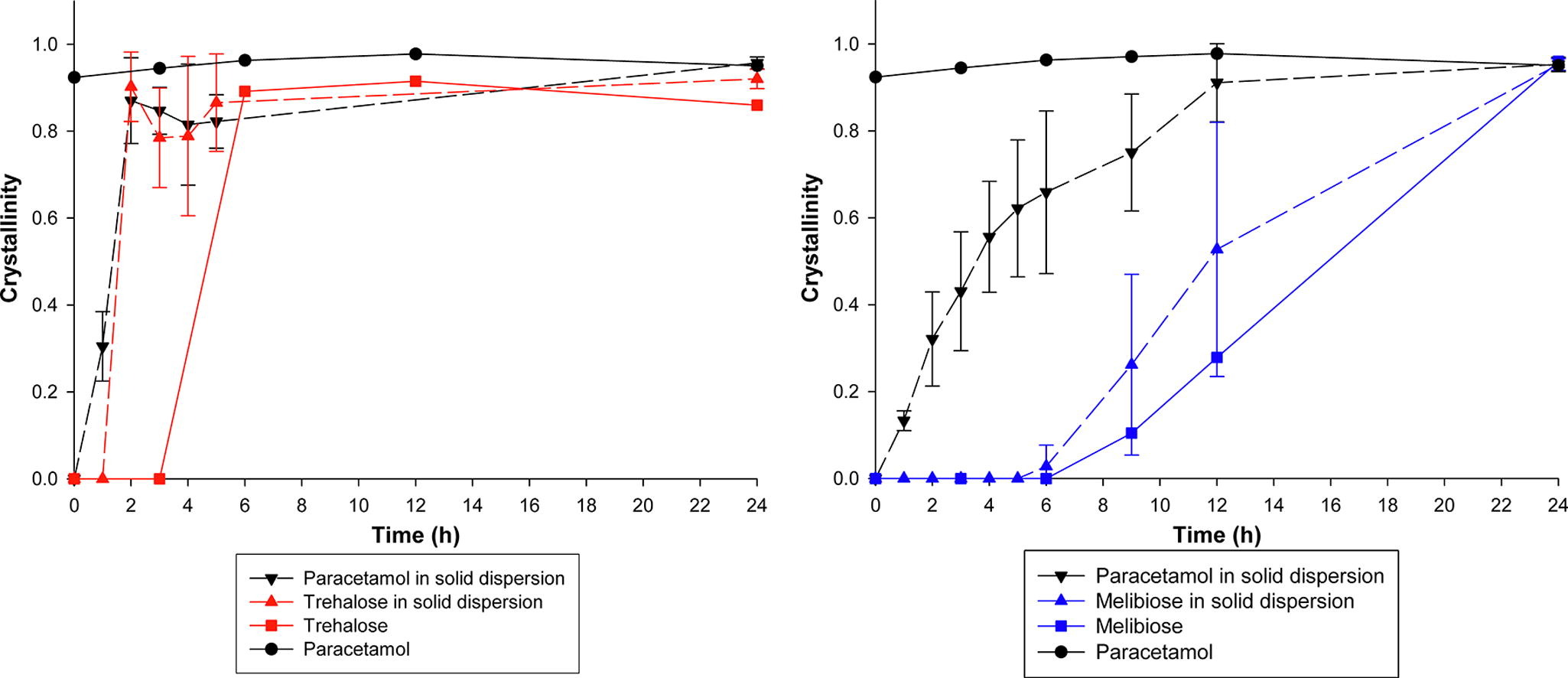Effect of trehalose and melibiose on crystallization of amorphous paracetamol

This paper investigates the solid-state behavior of two-phase solid dispersions involving small molecules. The effect of two sugars, trehalose and melibiose, on the recrystallization of amorphous paracetamol, and vice versa, was investigated. The solid dispersions were prepared via heating and quench-cooling, and then stored at a temperature of 38.5 ± 0.5°C and relative humidities of 3 ± 1% and 75 ± 1%. X-ray powder diffraction (XRPD) confirmed that the solid dispersions were amorphous, while Fourier-transform infrared spectroscopy (FTIR) and differential scanning calorimetry (DSC) revealed that the solid dispersions were two-phase systems with drug-rich and excipient-rich regions.
XRPD was used to qualitatively and quantitatively study the crystallization of the components, and revealed that, despite the existence of two phases, the sugars hindered the crystallization of paracetamol. In contrast, once the paracetamol crystallization started, it accelerated the crystallization of the sugars. Overall, the study demonstrates that small-molecule solid-dispersions need not be single-phase to observe mutual influences between the components in crystallization behavior, and that these effects are likely mediated through interactions at the phase interfaces, as well as alterations in water sorption and mechanical effects.
See the article on Effect of trehalose and melibiose on crystallization here
Author links open overlay panelEmmi A.K.Palomäki, Tiina Lipiäinen, Clare J. Strachan, Jouko K.Yliruusi
International Journal of Pharmaceutics, online 12 September 2020, 119878
https://doi.org/10.1016/j.ijpharm.2020.119878
Keywords: paracetamol, acetaminophen, trehalose, melibiose, amorphous, crystallization, 2-phase system,

